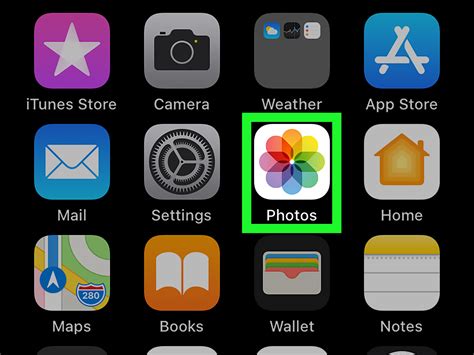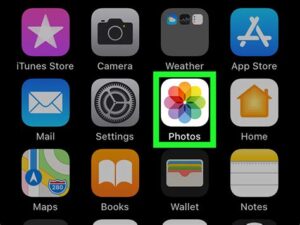I Have You Ever Accidentally Deleted Precious Photos from Your Phone? Don’t worry, it happens to the best of us. But did you know that there are ways to recover those hidden photos? In this blog post, we will explore various methods to help you retrieve your valuable memories. From utilizing the Recently Deleted folder on your device to uncovering hidden albums, we will guide you through the process. We’ll even show you how to search for hidden photos in third-party apps and recover them from iCloud. Stay tuned as we delve into using professional data recovery tools to retrieve those cherished photos effortlessly.
Using the Recently Deleted folder
When it comes to managing photos on our devices, accidents can happen. Whether you accidentally delete a precious memory or decide to remove a photo and later regret it, the Recently Deleted folder can be a lifesaver. This feature, available on both iOS and Android devices, acts as a safety net by storing deleted photos for a limited period of time before permanently removing them. In this blog post, we will explore how to use the Recently Deleted folder effectively and ensure that no cherished moments are lost forever.
Content Rich Approach
Nowadays, our smartphones and tablets have become the primary storage for our photos. With the convenience of capturing images anytime, anywhere, we often end up with numerous photos cluttering our devices. It’s easy to accidentally delete a photo while browsing through the gallery or when trying to free up storage space. This is where the Recently Deleted folder comes into play.
List of Key Features
| 1. Safeguarding Deleted Photos | When you delete a photo from your device, it doesn’t disappear immediately. Instead, it gets moved to the Recently Deleted folder, where it remains for a specific period of time before it’s permanently deleted. This allows you to recover any photos you may have accidentally deleted or change your mind about deleting. |
| 2. Easy Access | The Recently Deleted folder can typically be found within your device’s gallery or photo app. It’s a separate album specifically designed to store deleted photos. By accessing this folder, you can easily view and restore any photos within it. |
| 3. Restoration Options | Within the Recently Deleted folder, you have the option to either restore selected photos individually or recover all deleted photos at once. This flexibility allows you to choose the best approach depending on your specific needs. |
Conclusion
The Recently Deleted folder is a valuable feature that helps us recover and safeguard our deleted photos. By taking advantage of this folder, we can avoid the panic and regret that often accompanies accidentally deleting cherished memories. So, next time you find yourself in a similar situation, remember to check the Recently Deleted folder and bring your photos back to life with just a few taps.
Exploring hidden albums
Do you ever wonder if there are hidden albums in your photo gallery? Many of us are unaware that our devices may have hidden albums where certain photos are stored. In this blog post, we will be exploring the concept of hidden albums, how to find them, and what you can do with them.
Hidden albums are albums within your photo gallery that are not readily visible to you. These albums are usually created automatically by your device or certain apps for specific purposes. For example, some devices create a hidden album called “Recently Deleted” where all your deleted photos are stored for a specific period of time before being permanently deleted.
Furthermore, third-party apps may also create hidden albums to store your photos securely. These hidden albums are often password-protected or can only be accessed through specific authentication methods. It’s important to note that these hidden albums are meant to keep your photos safe and away from prying eyes.
Now that you know hidden albums exist, you might be curious about how to access them. The process may vary depending on the device you are using. For iOS users, you can access the hidden albums by opening the Photos app, tapping on the “Albums” tab, and scrolling down until you see the “Hidden” album. Once you tap on it, you can explore the photos stored in this album.
Alternatively, Android users can access hidden albums by opening the Gallery app, tapping on the three lines or dots icon, and selecting “Show hidden albums” from the menu. This will reveal any hidden albums that are present on your device.
When it comes to managing hidden albums, it’s important to be cautious. While some hidden albums are meant to protect your privacy, others may contain sensitive or personal information that you do not want to be easily accessible. Always be mindful of the content you store in your hidden albums and take necessary steps to secure them.
In conclusion, exploring hidden albums can be a fascinating and eye-opening experience. Knowing how to access and manage these albums can help you better organize your photos and protect your privacy. Whether it’s the “Recently Deleted” folder or hidden albums created by third-party apps, take the time to explore and discover what lies within your photo gallery.
Searching for hidden photos in third-party apps
The digital age has made it easier than ever to capture and store our precious memories through photos. With the abundance of photo apps available on smartphones and other devices, we have more options than ever to organize and store our photos. However, sometimes we may accidentally hide or misplace certain photos within these third-party apps, causing frustration and confusion. In this blog post, we will explore various techniques to search for hidden photos in third-party apps, ensuring that no cherished moments are lost or forgotten.
One of the first steps in searching for hidden photos in third-party apps is to understand the specific app’s settings and features. Each app may have different methods for hiding or organizing photos. Start by exploring the app’s menu and settings options, as there might be a dedicated folder or album specifically for hidden photos. Look for keywords such as “hidden,” “private,” or “locked” to indicate the presence of such a feature.
List of Techniques for Searching Hidden Photos in Third-Party Apps:
| Technique | Description |
|---|---|
| 1. Keyword Search | Utilize the search function within the app to search for specific keywords or tags that may be associated with the hidden photos. This can help narrow down the search and locate the desired photos more efficiently. |
| 2. Hidden Albums | Some apps have a hidden album feature that allows users to conceal certain photos. Look for options to reveal or unhide these hidden albums within the app’s settings. This can be a common place where accidentally hidden photos end up. |
| 3. Sorting and Filtering | Explore the app’s sorting and filtering options to arrange photos based on various criteria such as date, location, or file type. By adjusting these settings, hidden photos may become more visible or easier to locate within the app’s interface. |
By familiarizing yourself with these techniques and exploring the specific features of the app you are using, you can increase your chances of successfully finding hidden photos. Remember to regularly check your app’s settings and folders to ensure that no treasured memories remain hidden away.
Recovering hidden photos from iCloud
When it comes to storing and organizing our precious memories, iCloud has become a popular choice for many users. With its seamless integration and reliable backup system, it provides a convenient way to securely store our photos and videos. However, what if you have hidden some photos in iCloud and now you can’t find them? Don’t worry, in this blog post, we will guide you through the process of recovering hidden photos from iCloud.
Before we dive into the recovery process, let’s understand why you might need to hide photos in the first place. There are various reasons why someone might want to keep certain photos hidden, such as preserving privacy or keeping sensitive or personal images securely stored. Whatever the reason, iCloud offers a feature that allows you to hide selected photos from view.
But what happens when you need to access those hidden photos? Luckily, with the right steps, it’s possible to recover them. To start the recovery process, you’ll need to have access to a computer and your iCloud account details. Follow these steps:
- Open your preferred web browser and go to the iCloud website.
- Sign in to your iCloud account using your Apple ID and password.
- Once signed in, click on the “Photos” icon to access your iCloud photo library.
- In the Photos interface, you’ll find various albums and folders.
- Look for the “Hidden” album and click on it to see the photos you have hidden.
- Select the photos you want to recover.
- Click on the “Download” button to download the selected photos to your computer.
Using these steps, you can easily recover hidden photos from iCloud and access them whenever you want. A helpful tip is to create a separate folder on your computer to store these recovered photos, making it easier to organize and locate them.
It’s important to note that iCloud keeps backups of your photos, and if you have recently deleted a hidden photo, it may still be recoverable. iCloud retains deleted photos in the “Recently Deleted” folder for a limited period of time. To recover a recently deleted hidden photo:
| Step | Action |
|---|---|
| 1 | Navigate to the “Recently Deleted” folder in your iCloud Photos library. |
| 2 | Find and click on the hidden photo you want to recover. |
| 3 | Click on the “Recover” button to restore the hidden photo to your iCloud library. |
By following these steps, you can recover hidden photos even if they were recently deleted from your iCloud library. It’s important to regularly check the “Recently Deleted” folder to make sure you don’t permanently lose any hidden photos.
Recovering hidden photos from iCloud is a straightforward process that allows you to regain access to your precious memories. Whether you forgot where you hid a specific photo or need to recover a recently deleted hidden photo, iCloud offers the necessary tools to bring back your cherished moments with ease.
Using a professional data recovery tool
When it comes to recovering lost or deleted data, using a professional data recovery tool can be a lifesaver. Whether you have accidentally deleted important files or suffered data loss due to a system error or hardware failure, these tools can help you retrieve your precious files. With a wide range of options available in the market, it’s important to choose the right tool that suits your specific needs and requirements.
One of the key advantages of using a professional data recovery tool is its ability to scan and recover a variety of file types. Whether it’s documents, photos, videos, or even emails, these tools have the capability to retrieve them all. They employ advanced algorithms and scanning techniques to locate and restore the lost data from various storage devices such as hard drives, SSDs, USB drives, and memory cards.
Another important feature to consider while choosing a data recovery tool is its compatibility with different operating systems. Whether you’re using Windows, Mac, or Linux, make sure the tool you choose supports your specific OS. Additionally, it’s crucial to select a tool that offers a user-friendly interface, making it easy for even non-technical users to navigate and operate the software.
Furthermore, a professional data recovery tool should also prioritize data safety and security. Look for features like read-only operations, which ensure that your original data remains intact and unaltered during the recovery process. Additionally, consider a tool that offers options for previewing the recoverable files before actually restoring them, allowing you to select only the files you need and avoid unnecessary clutter.
In conclusion, when it comes to recovering lost or deleted data, using a professional data recovery tool can greatly increase your chances of success. These tools offer a wide range of features and capabilities, allowing you to retrieve various file types from different storage devices. By choosing a tool that is compatible with your operating system, offers a user-friendly interface, and prioritizes data safety, you can effectively recover your lost data and restore peace of mind.





